Psychology - based on Erik Erikson's Identity Youth and Crisis
What is identity? Today, identity is a quest or a search that is planned. We need to find our identity. However, identity is “a subjective sense of an invigorating sameness and continuity” (pg. 19). Essentially. identity is a part of oneself that remains the same throughout one’s life. Identity comes from the center of the individual and the center of the community. That means that the individual influences and creates his/her own identity, but the community and the people who surround this individual also play a role in creating this individual’s identity. We must develop an identity over time and discover who we are.
Consciousness of inner identity is knowing that one has an identity. It also means that one has confidence and pride in this identity. It is important to be happy and comfortable with one's identity. In order to be happy and comfortable with this identity, one must be conscious of his/her identity.
Consciousness of inner identity is knowing that one has an identity. It also means that one has confidence and pride in this identity. It is important to be happy and comfortable with one's identity. In order to be happy and comfortable with this identity, one must be conscious of his/her identity.
Requirements for Creating an Identity
There are various different requirements for creating an identity. First is self-reflection and observation. One must be able to examine his/her life from an outside perspective and decide one’s opinions on ones observations. Second is the need to use the entire brain. Of course, one must not half-heartedly create an identity. Third is that one must judge oneself in the way other judges oneself. This means that one must step outside of the picture and view oneself as others view one. Fourth is the need to judge oneself in the way that one sees him/herself compared to others. Identity is in part relative to other people. All of these lead to identity consciousness. (Of course, most of these are done subconsciously, but they all must be done for the self to create its identity.)
Beginnings of the Need for Identity
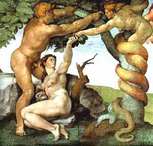
How did the need for identity begin? There must have been some point in history in which mankind suddenly had a need for an identity. Adam was created in G-d’s image and was therefore created with a piece of His identity. This gives all of humanity a quest for indiviualism. They wanted to be different and be an individual. The expulsion from heaven also causes mankind to unite his/her identity with the work he/she does. It also leads to cooperation, which causes men and women to unite with their companions in a group identity.
Personal Identity is knowing that you have selfsameness and continuity of existence in time and space and realizing that others recognize these qualities. Ego identity is the awareness of self-sameness and continuity of one’s meaning in the world. Morbid Ego Identity is when people really dislike part of their identity. This could be a body part like a nose and can lead some people to choose plastic surgery to get rid of their morbid ego identity.
Where does Identity Come From?
Where does identity come from? A person’s identity can come from their family background, values, and childhood events. All of these can influence identity or even create identity. People whose parents are rich and have to follow in their parents’ footsteps feel a need to create an identity of their own. They do so in order to escape this trap that the rest of their family will fall into. They have to join the rest of the world in choosing their own futures. This would be an example of turning from one’s family’s influence on your identity, but it has still made an impression on one’s identity and helped to form it.
Wars' Effect on Identity
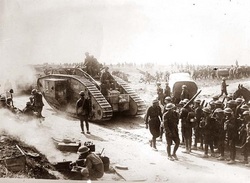
During the world wars, many people were “shellshocked”. The wars had lasted longer than anyone had expected, and it must scar a person to kill other people. The soldiers saw death day after day, and this disrupted their sense of identity. They had lost their “ego identity”, and they were unable to know who they were anymore. Identity Confusion is when a person loses a sense of who they are. The soldiers lost a sense of who they were after they were hit by the war. This then creates a crisis of identity, and the soldiers do not know what to do. Veterans of war often have a problem with identity crises: they have extreme reactions to small things and suffer somatic tension, social panic, and ego anxiety. They cannot know who they are anymore. Sometimes, ego identity was strong during war and fell apart after they felt that they were not as important after the war. War can provide a sense of importance because soldiers are saving the world and protecting what they believe in. However, when they return home and sometimes do not feel they have a meaningful job, they can lose the strength of their ego identities.
Nationalism and Identity
Wars were caused in part by nationalism. Each group of people is ethnocentric and nationalistic; each group creates a history to prove that they are greater than others. This theory is called Pseudospecies. This causes men to kill one another because they think they are better than the others. Technology is so advanced that when we try to glorify our species that is supposedly superior by killing the other species (ethnic cleansing), we are actually causing the end of humanity.
Identity Crises
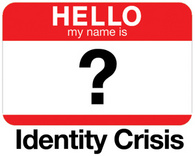
Identity Crises are supposed to happen to all individuals during adolescence. All adolescents are supposed to go through a little bit of an identity crisis in their life, usually during the teenage years. A nation can have an identity crisis; it can worry who it is in the world. In this case we have an adolescent, and all of the youth of the country can share a type of individual identity crisis. This causes identity confusion. Sometimes, people wonder: would people have identity confusion if they did not know that they were supposed to have an identity crisis? Because society is so focused on the future and knowing our place in the world, many people become worried that they will not find their place. Then, it becomes normal to have an identity crisis, and the fact that people know that people can have identity crises makes them have identity confusion. Many people also suffer from midlife identity crisis, which occurs when people of their "middle ages" sense a passing of their youth. However, doctors have argued that the so called "midlife crisis" is simply a transition into the older years and is a normal part of life.
Positive Identity, Self-Esteem, and Self-Love
There are eight stages of a life cycle which contribute to identity. Childhood is the start of identity, then youth, and finally adult ethics. All of this allows the person to create his/her own individual identity. It is important to create a positive Identity. This means that one is able to conquer, through the eight stages, the negative traits and create a positive, healthy identity. The Jewish people, after all of the persecution and negativity during the Holocaust and other persecutions, were able to create a positive identity.
Another important part of the eight stages (which are described below) is self-esteem. This comes from feeling confident in what one can do. In the early stages of childhood development, learning to walk helps create an identity as a person competent in the act of walking. In turn, this helps the ego think that it can take steps to a good, successful future, which then creates a social reality and leads to ego identity.
When a child is young and his/her achievements are disapproved of, such as in The Little Prince, he/she tries to look for people who are respected and tries to be like them. When the child sees someone whose accomplishments are recognized, they want to be recognized. In order to get recognized, they begin to copy the person who is recognized. Then he/she tries to recreate the self-love which is fostered and not real. This self-love would only be possible if the child was doing what it wanted to do and not what somebody else wanted to do.
Another important part of the eight stages (which are described below) is self-esteem. This comes from feeling confident in what one can do. In the early stages of childhood development, learning to walk helps create an identity as a person competent in the act of walking. In turn, this helps the ego think that it can take steps to a good, successful future, which then creates a social reality and leads to ego identity.
When a child is young and his/her achievements are disapproved of, such as in The Little Prince, he/she tries to look for people who are respected and tries to be like them. When the child sees someone whose accomplishments are recognized, they want to be recognized. In order to get recognized, they begin to copy the person who is recognized. Then he/she tries to recreate the self-love which is fostered and not real. This self-love would only be possible if the child was doing what it wanted to do and not what somebody else wanted to do.
Erik Erikson's Eight Stages
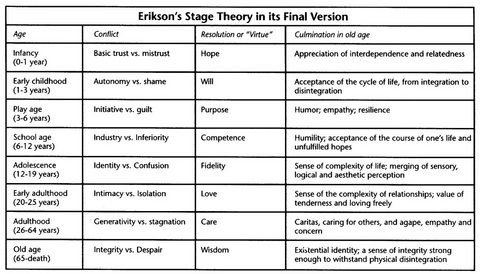
The first stage of the life cycle is trust towards others and oneself. This is a crisis that a newborn must face. (Note: in this sense, a crisis is a turning point that must be reached.) A baby must recognize and be aware of what he/she is offered during this time. Some adults grow to mistrust everyone and isolate themselves; therefore, it is important for the baby to be able to trust others. If they can trust others, then they can safely form their identities. After a while, the baby begins to teethe and therefore bite. The eyes and ears begin to focus, they are able to turn their upper bodies, their arms can reach out and grasp objects, and they can take and hold objects. Now, the baby is more aware of him/herself and his/her place in the world. Mothers can create a trusting environment by caring for their babies. This helps them form an identity to prove to the baby that there is meaning in doing. The earliest sense of identity can come through love and the mother. It can be described as “I am what hope I have and give” (pg. 107.)
The second stage is autonomy, doubt, and shame. Autonomy is the ability to become indepedent. At this stage, when the baby’s muscles mature, it can talk, hold on and let go, and he/she has willpower, the baby must establish autonomy. If not, the baby can begin to doubt and feel shameful. This would make him/her feel self-consicous. Of course, both are in proper balance in the world. Just as trust is based off of the parents, the degree to which the baby attains free will is based off of the parents. In society, nobody is granted complete autonomy: laws decide some of the rights of mankind. One way to describe this stage is, “I am what I can will freely” (pg. 114).
Stage three is guilt and a sense of initiative. A sense of initiative is knowing one’s purpose and meaning in the world. Guilt, which is an important part of life, is based off of anticipatory rivalry and jealous rage. At this stage, the baby begins to move freely, set goals, speak fluently (in his/her native language), have an imagination, and try to understand differences in roles and age. It can be described as “I am what I can imagine I will be” (pg. 122).
The fourth step is industry and inferiority. Industry is the need to make things and gain recognition for making these things. Inferiority, which can lead to identity confusion, is feeling subordinate to others. It is a type of estrangement when someone cannot solve his/her conflicts. The child then becomes dependant and wants to be babied. At this point in time, the child goes to school, begins to build things, gets an education (sometimes becomes literate), and gains a knowledge (sometimes this knowledge is in the family business or family farm). Sometimes, at school, the child is faced with prejudice because of skin color or ethnic background, and this can lead to inferiority. However, the child generally at this time has the need to construct and plan. The parent does not want them to associate work with boredom and wants the child to enjoy working. A this point, the child’s stage can be described as “I am what I can learn to make work” (pg. 127).
Stage five is identity and identity confusion. Identity, as mentioned earlier, is sameness and continuity in knowing who one is in the world. Identity confusion is when someone cannot see his/her purpose in the world. At this stage, the child is an adolescent. He/she is concerned about appearances, looks for ideas, has a strong will, does not want to be ridiculed by peers, turns to friends and family for advice, has to consider what occupation he/she will choose, and can sometimes be rebellious because of an identity confusion. The sense of identity at this stage is very important. He/she must establish who he/she is and place him/herself in the world. If, at this stage, there is identity confusion that goes too far, the adolsescent could lose his/her individuality.
The sixth stage is intimacy and a sense of isolation. Intimacy is friendship and relationships with other people. A sense of isolation can lead a person to withdraw, feel lonely, be unable to trust other people or form relationships, and can cause the person to feel separate from the rest of society. At this point in time, the person has formed an ethical sense and is able to choose on his/her own what is right and what is wrong. This stage can be described as “We are what we love” (pg. 138).
Stage seven is generativity and stagnation. Generativity is when someone helps the youth of the area, sometimes because this person is a parent. Stagnation is boredom, self-interest, and selfishness. This person does not want to help the youth of his/her time. At this point, when the person has a child, he/she shares his house with the child and can learn to share the work with another person.
The eighth and final stage is integrity and despair. Integrity in this sense is being happy with the accomplishments one has completed, defending one’s dignity, acceptance, and being ready to pass the power onto the new generation. Despair is when someone does not accept his/her stage in life. The person dislikes fate, people, and him/herself. However, if one can accept one’s position in life and be happy with one’s life, then one can have integrity. This stage can be described as “I am what survives of me” (pg. 141).
The second stage is autonomy, doubt, and shame. Autonomy is the ability to become indepedent. At this stage, when the baby’s muscles mature, it can talk, hold on and let go, and he/she has willpower, the baby must establish autonomy. If not, the baby can begin to doubt and feel shameful. This would make him/her feel self-consicous. Of course, both are in proper balance in the world. Just as trust is based off of the parents, the degree to which the baby attains free will is based off of the parents. In society, nobody is granted complete autonomy: laws decide some of the rights of mankind. One way to describe this stage is, “I am what I can will freely” (pg. 114).
Stage three is guilt and a sense of initiative. A sense of initiative is knowing one’s purpose and meaning in the world. Guilt, which is an important part of life, is based off of anticipatory rivalry and jealous rage. At this stage, the baby begins to move freely, set goals, speak fluently (in his/her native language), have an imagination, and try to understand differences in roles and age. It can be described as “I am what I can imagine I will be” (pg. 122).
The fourth step is industry and inferiority. Industry is the need to make things and gain recognition for making these things. Inferiority, which can lead to identity confusion, is feeling subordinate to others. It is a type of estrangement when someone cannot solve his/her conflicts. The child then becomes dependant and wants to be babied. At this point in time, the child goes to school, begins to build things, gets an education (sometimes becomes literate), and gains a knowledge (sometimes this knowledge is in the family business or family farm). Sometimes, at school, the child is faced with prejudice because of skin color or ethnic background, and this can lead to inferiority. However, the child generally at this time has the need to construct and plan. The parent does not want them to associate work with boredom and wants the child to enjoy working. A this point, the child’s stage can be described as “I am what I can learn to make work” (pg. 127).
Stage five is identity and identity confusion. Identity, as mentioned earlier, is sameness and continuity in knowing who one is in the world. Identity confusion is when someone cannot see his/her purpose in the world. At this stage, the child is an adolescent. He/she is concerned about appearances, looks for ideas, has a strong will, does not want to be ridiculed by peers, turns to friends and family for advice, has to consider what occupation he/she will choose, and can sometimes be rebellious because of an identity confusion. The sense of identity at this stage is very important. He/she must establish who he/she is and place him/herself in the world. If, at this stage, there is identity confusion that goes too far, the adolsescent could lose his/her individuality.
The sixth stage is intimacy and a sense of isolation. Intimacy is friendship and relationships with other people. A sense of isolation can lead a person to withdraw, feel lonely, be unable to trust other people or form relationships, and can cause the person to feel separate from the rest of society. At this point in time, the person has formed an ethical sense and is able to choose on his/her own what is right and what is wrong. This stage can be described as “We are what we love” (pg. 138).
Stage seven is generativity and stagnation. Generativity is when someone helps the youth of the area, sometimes because this person is a parent. Stagnation is boredom, self-interest, and selfishness. This person does not want to help the youth of his/her time. At this point, when the person has a child, he/she shares his house with the child and can learn to share the work with another person.
The eighth and final stage is integrity and despair. Integrity in this sense is being happy with the accomplishments one has completed, defending one’s dignity, acceptance, and being ready to pass the power onto the new generation. Despair is when someone does not accept his/her stage in life. The person dislikes fate, people, and him/herself. However, if one can accept one’s position in life and be happy with one’s life, then one can have integrity. This stage can be described as “I am what survives of me” (pg. 141).
Conflicts
All throughout life, we face conflicts. Some of these normal conflicts stay with us forever. Every time these are re-resolved, we are more united and have better judgement. There is a process in which the individual becomes a separate personality, as illustrated in the eight stages. Personality can be based off of interaction with and connections to other people. Learning how to achieve all of these qualities and facing the crisis helps the individual reach the stage of development. Each of these steps leads the individual to establish his/her identity.
Other Psychologies
Nature vs Nurture
For years scientists have debated whether personality is determined by a person's genes or their environment. Fairly recently, scientists have made progress in locating genes responsible for certain behaviors such as aggression. However, if genes are the only thing responsible for behavior, how can we explain two identical twins having different personalities. It is a question like this that brought many scientists to the conclusion that personality and behavior are shaped by both one's genes and environment. A gene, for instance, may be "turned on" due to an experience in a person's life. A person who suffered from abuse during their childhood may be more inclined to go into depression than a person with a non-abusive childhood, even if they have the same forms of a gene responsible for that behavior. It is widely agreed upon that neither genes nor environment can be solely responsible for the development of personality. A combination of the two is much more likely determiner of identity. However, John Locke, a 17th century British philosopher, advocated his theory of the tabula rasa ("blank slate"). Locke argued that every human's mind is a blank page when he or she is born and that all knowledge comes from experience. He would agree with the idea that a person's identity is only shaped by their environment. However, because Locke lived before modern genetics were discovered, he wouldn't have known about the role DNA plays in determining personality.
Dissociative Identity Disorder
Dissociative Identity Disorder, or DID, is a severe condition in which multiple identities are present within an individual. It is characterized by fragmentation of identity rather than a growth of separate personalities. Patients who are diagnosed with DID cannot integrate different aspects of identity in one multidimensional self. Instead, they form distinct personalities that take over at certain times.. Because they cannot form one concrete identity, they do not have a set personality. The different identities that the person has may have different names and histories and can conflict with one another due to the fact that they may contain different memories of the person's life. The lack of an ability to form an identity deprives people suffering from this disorder of having any sense of self. It can be very harmful to both the patients and their families because different identities can emerge unannounced and take over the person's emotions, causing them to forget who a close family member is and perhaps act aggressively towards their loved ones.
Identical Twins
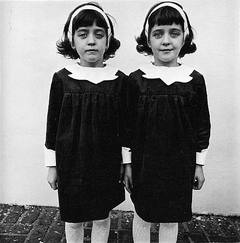
For identical twins, becoming individual can be a hard process. They are constantly referred to as a pair, and are frequently mistaken for the other person. It is not unusual, therefore, for identical twins to take on opposite personalities. One will become the assertive, outgoing one and the other will take on the role of shy and passive. Identical twins are biologically the same, so when each twin creates a distinct personality from the other, they are forcing themselves to become someone who they are not. To maintain their image, they have to suppress certain traits regardless of how they actually want to express themselves. It is unfortunate that identical twins have to go to such extreme measures to gain a sense of individuality. However, if they did become differentiated, they might never have an identity to call their own.
Freudian Psychology

According to Sigmund Freud, human behavior is strongly determined by the subconcious mind. Because of this, humans don't necessarily have control over their identity- how they think and act. This idea contrasted the accepted principle that humans are solely physiologic beings, simply reacting to external stimuli. Freud's examining of the complex nature of identity, rooted in the subconscious, led to breakthroughs in our understanding of vast array of psychological conditions. He said that unconscious drives, especially the sex drive, controlled behavior, and that these drives were suppressed for young children. It is not until adolescence that these biological drives can be fulfilled.
Works Cited
http://scrapetv.com/News/News%20Pages/Technology/images/michelangelo-temptation-adam-and-eve.jpg
http://top-10-list.org/wp-content/uploads/2009/09/World-Wars.jpg
http://www.frugalcouponliving.com/wp-content/uploads/2010/02/IdentityCrisis.jpg
http://www.utdallas.edu/~kprager/erik_e1.gif
http://www.psywww.com/intropsych/ch11_personality/11eriksonstages.jpg
Erikson, Erik H. Identity, Youth, and Crisis. New York: W. W. Norton, 1968. Print.
http://econjwatch.org/articles/economic-dissociative-identity-disorder-the-math-gamer-the-anti-policy-econometrician-and-the-narrative-political-economisthttp://www.soulwork.net/sw_articles_eng/schizophrenia.htm
http://top-10-list.org/wp-content/uploads/2009/09/World-Wars.jpg
http://www.frugalcouponliving.com/wp-content/uploads/2010/02/IdentityCrisis.jpg
http://www.utdallas.edu/~kprager/erik_e1.gif
http://www.psywww.com/intropsych/ch11_personality/11eriksonstages.jpg
Erikson, Erik H. Identity, Youth, and Crisis. New York: W. W. Norton, 1968. Print.
http://econjwatch.org/articles/economic-dissociative-identity-disorder-the-math-gamer-the-anti-policy-econometrician-and-the-narrative-political-economisthttp://www.soulwork.net/sw_articles_eng/schizophrenia.htm
